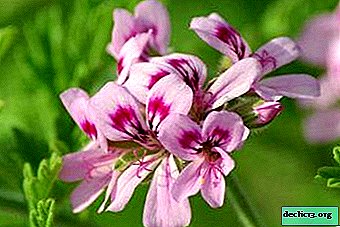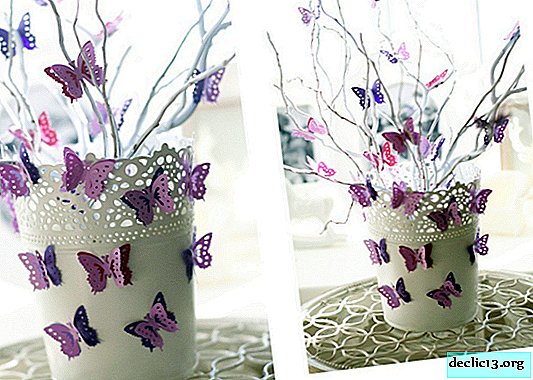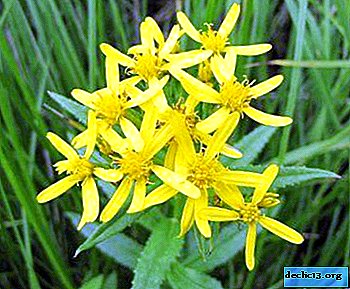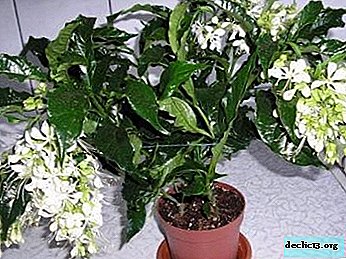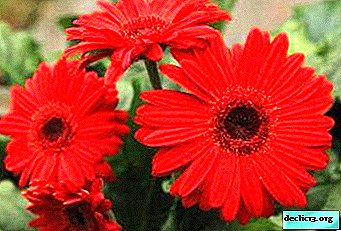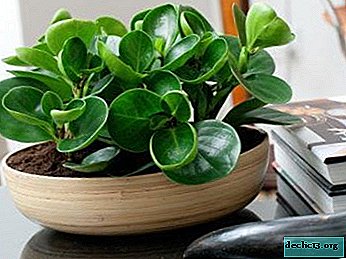The variety of species of Echinocactus and their care at home
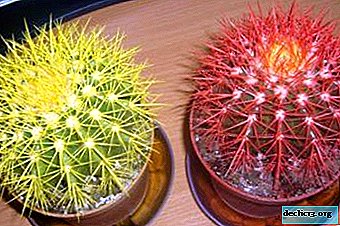
It is not difficult for a person who for the first time decides to purchase a prickly green friend to be confused by the breadth of the assortment of cacti offered by large stores, even if the choice is aimed at a narrow category of echinocactus. The plant is a genus of spherical cactus, characterized by unhurried growth and unpretentiousness when grown indoors. In the article, we will consider clearly the variety of cacti of this species, and also learn how to care for them at home.
Diversity of the genus Echinocactus: names and photos of species
Gruzoni (Grusonii), varieties "Rainbow", "Red"
Spherical Gruzoni are the most popular indoor echinocactus. Wild Gruzonis grow in Mexico, they were the first domesticated echinocactus.
The stalk (the stalk is the “body” of the cactus) is almost perfectly spherical in shape, covered with white or yellow spines, grouped in separate bunches. The cactus stem is covered with rows of protruding "ribs".
The maximum stem height of wild Gruzoni is about 130 cm, width is 80 cm. Do not be afraid: at home, these plants do not grow more than half a meter. Flowers are yellow or brown. In residential conditions Gruzoni does not bloom.
Often on the shelves of flower shops you can find Gruzoni cacti with thorns painted in bright colors. They are sold under the names "Rainbow" or "Red."Them the difference from the wild cactus is only in the colors of the thorns. The "red" spines have a saturated red color, the "rainbow" they can be painted in purple, pink, yellow and many other colors.
Buyers are often deceived, accepting similar cacti as individual bred varieties with the color of needles fixed at the genetic level. In fact, colored needles of cacti in such cases are always tinted artificially. Keep in mind that as they grow, these plants can lose their marketable appearance only a few months after purchase.
Texas (Texensis)
Texas echinocactus, as the name implies, grows primarily in the US state of Texas. The stem of plants of this species has the shape of a ribbed flattened ball of 20 cm in height and a diameter of up to 30 cm. The number of cactus ribs is estimated at 1-2 dozens, the length of individual spines can reach 6 cm.
It shows high growth rates compared to other echinocactus, unpretentious throughout the development cycle. This makes it easy to germinate seeds and grow plants of this species at home.
Horizontal (Horizonthalonius)
A small horizontal echinocactus grows in the North American deserts and grows up to 25 cm up. Its spherical stem also has ribs, which, unlike the previous view, are somewhat twisted into a spiral.
Young thorns, flowers and ripe fruits of a horizontal cactus are painted in bright red shades, thanks to this, plants in the natural habitat are striking from a considerable distance. With good care, the species is capable of flowering when grown in the house.
Barbed (Platyacanthus) or Wide-Angled (Ingens)
The distribution area of the flat-throated cactus coincides with the horizontal distribution. The stem is covered with gray spines, the length of which reaches 5 cm. The flesh of this species was so popular with Mexicans.that the species was brought to the brink of extinction and taken under protection.
Due to the enormous size of the flat-thorn cactus (up to 2 meters in height and one and a half meters in width), its maintenance in the apartment is a dubious pleasure. However, under indoor conditions, the species is capable of blooming large and bright yellow flowers up to 4 cm long.
Parry (Parryi)
Another endangered species of echinocactus is Parry. Parry has a spherical, unusual bluish hue. The stem height of this undersized species does not exceed 30 cm, but the length of its hooked spines can reach 10 cm. As it grows older, the body of this cactus takes on an ever more elongated shape.
The main reason for the decline in the number of this species is poor survival. Parry is very vulnerable to adverse environmental conditions and putrefactive processes, and their seeds have poor germination.
Multi-headed (Polycephalus)
Polycephalus is a species of echinocactus, generally similar to the previous one - Parry. The most noticeable differences are in larger sizes (stem height up to 70 cm), as well as the tendency to gather in large colonies of up to hundreds of plants.
The distribution area is limited to the Mojave Desert (Mexico). Thick five-centimeter spines are yellow or brown. Thanks to their spectacular appearance, the cactus resembles a large bristled hedgehog. Blooms very rarely.
Care
Like any desert plants, species from the Echinocactus family are quite undemanding and require very little attention. These cacti can grow for decades at a speed of several centimeters per year.Most cacti love direct sunlight and warmth. The air temperature should not drop below 7-8 ° C. Water with warm and clean water, spraying the plant, abundantly but infrequently (in winter - at least once a month, in summer 2 times are enough). Excessive watering or humidity can cause rotting and fungal diseases. In the summer it is useful to fertilize the plant. Every few years, a cactus needs to be transplanted into a larger pot.
All species of echinocactus grow in the same climate zone and have similar care requirements. This gives ample opportunities for compiling mixes from Gruzoni and co-cultivation of several species in one pot.
Read more about caring for echinocactus here.
The content of echinocactus in the house can bring a lot of benefit and pleasure with minimal investment of time and effort. The richness of the forms of these rounded creatures, covered with thorns, few people can leave indifferent.

